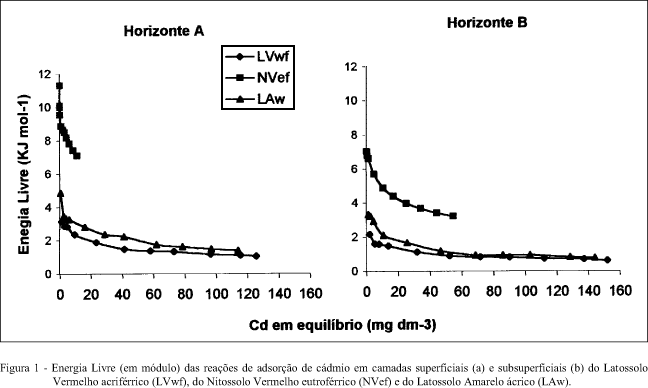Cadmium is a heavy metal that can be added to the soils through disposal of city wastes, sewage sludge and phosphatic fertilizers. Cd is easily absorbed and translocated by plants and has a great potential to enter the human food chain. The persistency and the mobility of Cd in soils is largely determined by the extent of its adsorption by soil particles. The evaluation of the free energy of Cd adsorption by the soil is a measurement of the reaction strength. Free energy of cadmium adsorption was studied in surface and subsurface samples from a Rhodic Kandiudalf, an Anionic "Rhodic" Acrudox and an Anionic "Xanthic" Acrudox, after addition of 5, 10, 15, 25, 50, 75, 100, 125, 150, 175 e 200mg L-1 of cadmium. Cadmium adsorption was considered spontaneous, since free energy was negative in all concentration. Free energy values decreased with the increase in concentration of added cadmium. The Alfisol showed higher free energy than the Oxisols, mainly in surface samples. For the same soil, surface horizons showed higher values of free energy than subsurface horizons, probably due to the effect of organic matter, whose affinity for cadmium is high.
organic matter; iron oxide; zero point of salt effect


